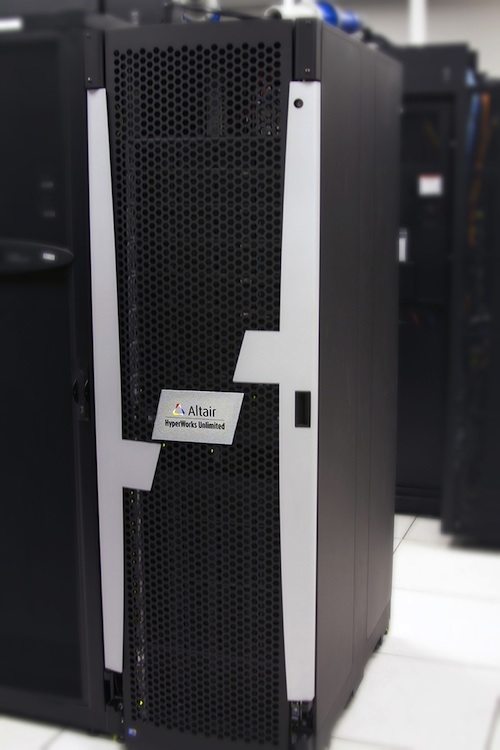Latest News
September 13, 2013
High Performance Computing (HPC), while critical to companies and research organizations working on complex, simulation-intensive design problems, is seen as out of reach by many players.
Not only can the wrong HPC hardware and software break the bank for many engineering shops, it can be highly complex, requiring specialized workload management software and skilled expertise to ensure everything is configured so that the environment runs at peak performance. Because of its complexity, there have been plenty of barriers to HPC adoption, particularly for small- and mid-size companies, which can lack the resources to effectively procure, manage, and maintain large HPC clusters.
Simulation specialist Altair is looking to level the playing field for HPC with its announcement of a fully-configured hardware and software appliance for computer-aided engineering (CAE). To many, the word appliance is associated with items like refrigerators or washing machines, but over the last few years, the concept has taken hold in the IT world as a way to bundle up traditionally complex technologies like large-scale database processing or high-end storage and make it more palatable to a less tech-savvy audience.
Altair’s new HyperWorks Unlimited essentially packs all the pivotal HPC technologies—cluster technology, CAE software, and workload management capabilities—into a turnkey solution so it’s far more accessible to CAE users. Altair contends it’s well positioned to deliver an HPC appliance because it provides the full spectrum of capabilities as part of its product line.
“From workload management to application software, we do all the different aspects,” notes Ravi Kunju, Altair’s vice president of strategy and business, Enterprise Solutions. “We’re trying to make the entire process of bringing on HPC completely easy for the customer and eliminating an entire food chain to deal with.”
For the hardware piece of HyperWorks Unlimited, Altair is partnering with SGI. The pair is delivering an Altair-branded appliance that leverages Intel Cluster Ready technology, which unites Altair’s HyperWorks software with hardware based on Intel’s Xeon E5-2600 processor family. HyperWorks Unlimited is fully optimized to run massively parallel applications such as computational fluid dynamics (CFD) and finite element analysis (FEA) solvers (Altair’s and others) and it also includes Altair’s Display Manager, a remote visualization Web-based portal for accessing graphically-intensive applications on HyperWorks Unlimited.
The combination of technologies creates an optimized private cloud as the backbone of HyperWorks Unlimited. The approach addresses three of the primary barriers to adoption that have long plagued HPC technology: scalability of application licensing; the long lag time associated with moving the vast amounts of data from clusters to local machines for post-processing and visualization; and the perceived data security concerns associated with public clouds.
HyperWorks Unlimited says it eliminates these issues. The offering includes unlimited use of all Altair software, including all HyperWorks applications and the PBS Works workload management tools so there is no restricted access and no more concerns related to scalability of application licensing, Kunju says. The Display Manager remote visualization capabilities limit the amount of data needed to be transferred, which helps to address performance concerns, and the appliance architecture serves as a private cloud that remains on-premise behind a company’s firewall, minimizing security concerns.
“At the end of the day, engineers just want answers as quickly as possible with the least amount of work to get the job done,” Kunju says. “They don’t care where the software runs.”
To find out more about Altair HyperWorks and hear about its flexible licensing model, watch this video.
Subscribe to our FREE magazine, FREE email newsletters or both!
Latest News
About the Author
Beth Stackpole is a contributing editor to Digital Engineering. Send e-mail about this article to [email protected].
Follow DE






